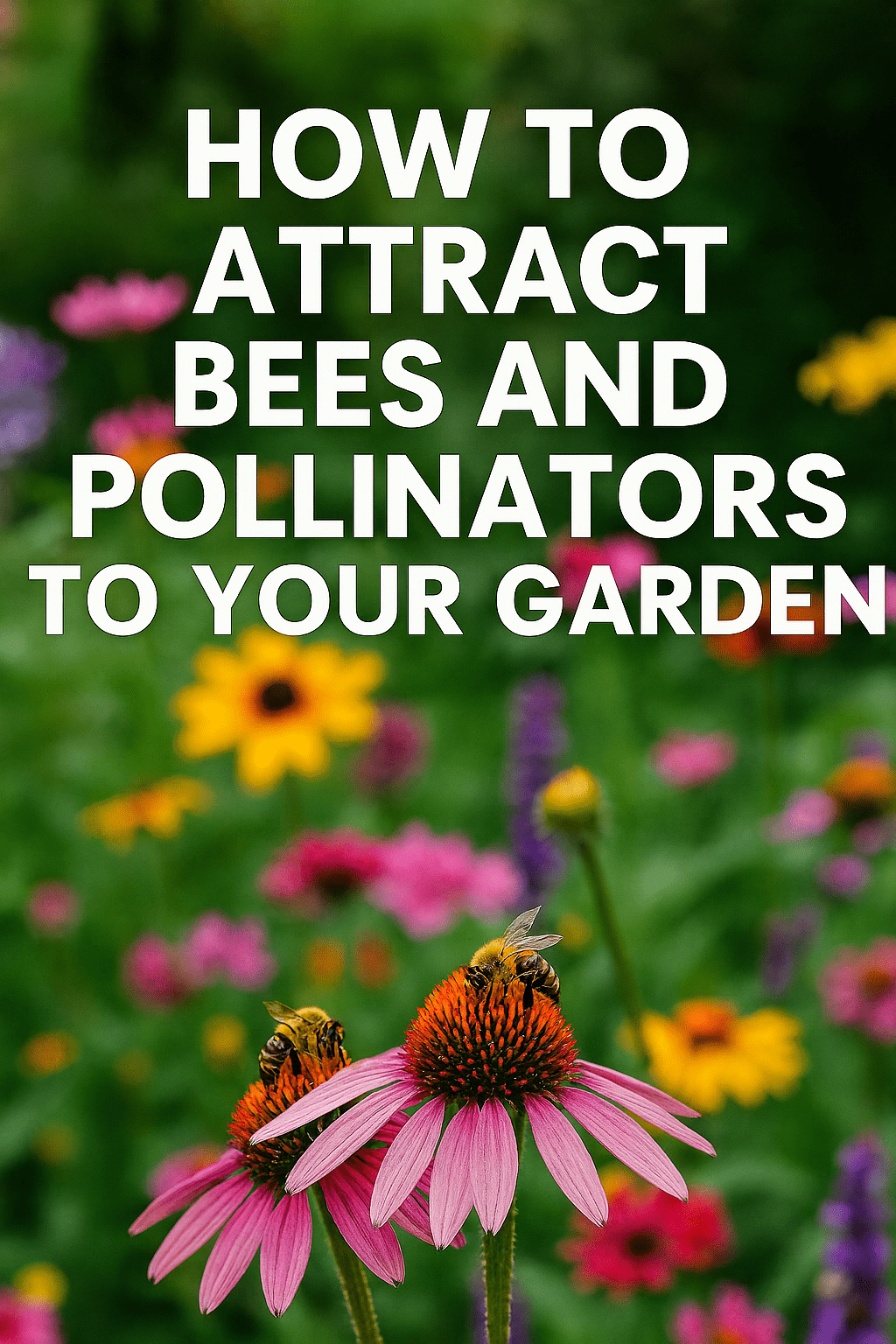
Bees and pollinators are vital to a healthy, thriving garden. Without them, many plants wouldn’t produce fruit or flowers. Thankfully, attracting pollinators like bees, butterflies, and hummingbirds is simple — and one of the best things you can do for your garden and the planet.
Why Pollinators Matter
Pollinators play a crucial role in plant reproduction. They transfer pollen from one flower to another, enabling the growth of fruits, vegetables, seeds, and flowers. Nearly 75% of all flowering plants rely on animal pollinators. That includes over 100 crops we eat — from apples to zucchini.
Top 7 Ways to Attract Bees and Pollinators to Your Garden
1. Plant a Variety of Flowers
Bees and butterflies are attracted to diverse, colorful gardens. Grow a mix of native flowers with different bloom times to provide food year-round.
Best choices include: Lavender, bee balm, echinacea, cosmos, calendula, and sunflowers.
2. Choose Native Plants
Native plants have co-evolved with local pollinators and often provide the best nectar and pollen. They also require less maintenance and resist local pests and diseases better than non-native species.
3. Avoid Chemical Pesticides
Even organic-looking sprays can harm pollinators. If pest control is necessary, use natural methods like neem oil, companion planting, or apply sprays in the early morning or late evening when pollinators are inactive.
4. Provide Water Sources
Bees and butterflies need clean, shallow water. Fill a shallow dish or birdbath with water and add pebbles or corks so pollinators can land safely while drinking.
5. Build Pollinator Habitats
Leave a patch of bare soil for ground-nesting bees or install a bee hotel for solitary species. Avoid over-mulching and excessive tilling in these areas.
6. Let Herbs and Veggies Flower
Herbs like basil, thyme, oregano, dill, and cilantro attract pollinators when allowed to flower. Let some of your vegetable plants (like arugula or radish) bolt to provide extra nectar sources.
7. Group Flowers Together
Mass plantings are easier for bees to spot and forage. Group three or more of the same plant together instead of scattering them randomly.
When to Expect Pollinators
Most pollinators are active from spring through early fall. Planting flowers that bloom in early spring (like crocus) and late fall (like goldenrod) extends your garden’s attractiveness and helps pollinators thrive longer.
Additional Tips for a Pollinator-Friendly Garden
- Use diverse flower shapes and colors (bees love blue, purple, and yellow)
- Minimize lawn areas and increase flower beds
- Reduce night lighting near flowers — it disrupts nighttime pollinators like moths
- Avoid hybrid flowers bred for appearance — they may lack nectar or scent
Pollinator Benefits Go Beyond Your Garden
Encouraging pollinators supports local ecosystems, enhances biodiversity, and improves crop yields in community and commercial agriculture. You’re helping fight pollinator decline by making a difference in your own yard.
Final Thoughts
Creating a pollinator-friendly garden is one of the easiest and most rewarding things any gardener can do. With just a few thoughtful plant choices and small habitat changes, your garden can become a buzzing haven of life and productivity.
Want to go even further? Learn how to make your own DIY natural fertilizers and nourish your garden without chemicals.

